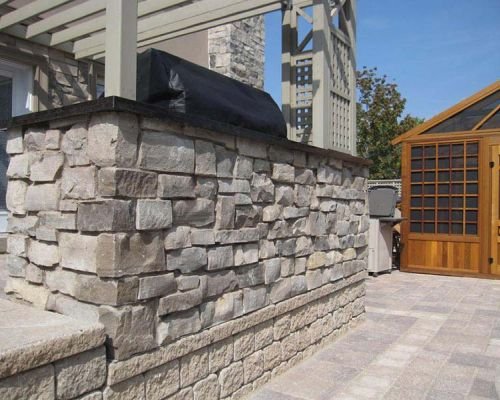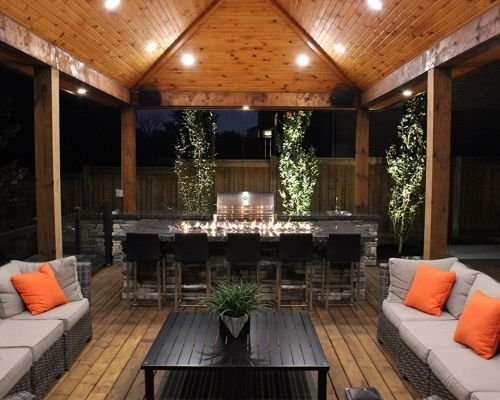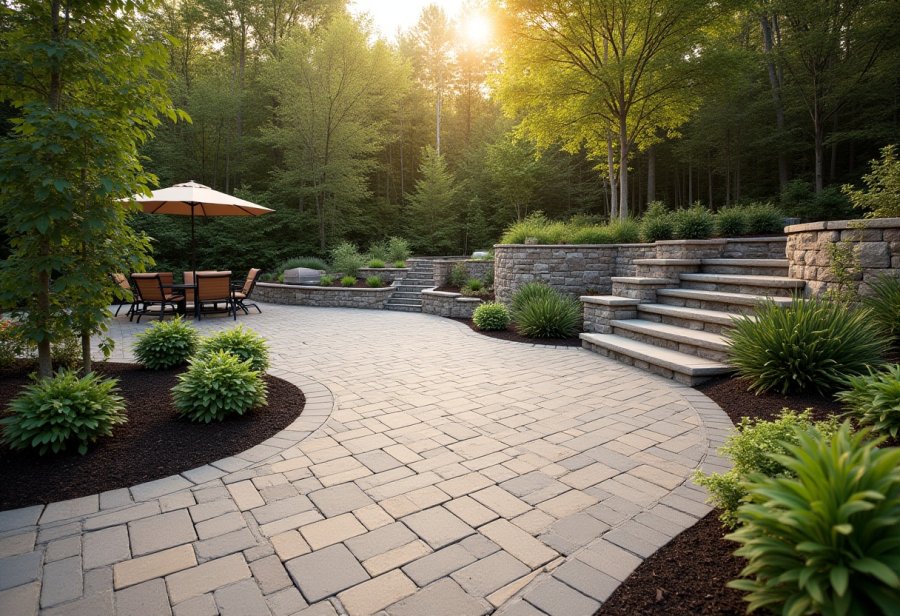Transforming Toronto yards into enchanting outdoor retreats is more than just aesthetic enhancement—it’s a delicate balance of beauty, sustainability, and client satisfaction. How can designers craft spaces that seamlessly blend modern innovation with ecological responsibility? This guide explores how Toronto’s diverse climate, cultural influences, and commitment to eco-friendly practices shape outdoor transformation projects. From native plant selections to smart irrigation and durable, environmentally conscious materials, every element is chosen to withstand seasonal extremes while providing aesthetic appeal. The emphasis on personalized design ensures each yard reflects its owner’s lifestyle, whether hosting gatherings or cultivating tranquility. As trends evolve toward minimalist sophistication and lush natural landscapes, the future promises adaptable, tech-integrated, and community-focused outdoor spaces. With thoughtful planning and innovative solutions, Toronto’s outdoor environments are evolving into resilient, inspiring sanctuaries—raising the question: how will these green retreats continue to shape urban life and ecological health in years to come?
Transform Your Outdoor Space with Toronto Landscape & Design
Looking to elevate your Toronto home’s outdoor appeal? Toronto Landscape & Design (TLD) specializes in stunning backyard makeover projects that incorporate natural stone, water gardens, irrigation systems, and retaining walls. Our award-winning designers take everything into consideration to craft personalized landscapes that blend beauty and functionality. Whether you want a tranquil water feature or durable retaining walls, TLD has the expertise to bring your vision to life. Reach out today at 1.416.644.0499 or via email at mike@torontolandscapedesign.com to start your outdoor transformation.

Transform Toronto Yards Into Personal Outdoor Retreats
Transforming outdoor spaces in Toronto has evolved from simple yard upgrades into a vital part of urban living. Today’s homeowners see their yards as extensions of their homes—places to relax, entertain, and connect with nature without leaving the city. The goal is to craft outdoor retreats that blend beauty, functionality, and sustainability, creating spaces that reflect personal style while respecting local ecological conditions.
Designing these outdoor environments requires careful planning and a clear understanding of what residents truly want. Whether it’s a cozy patio for evening gatherings or a lush garden for peaceful mornings, each project begins with listening closely to the homeowner’s vision. The challenge is to develop a space that is both visually appealing and practical, supporting daily life and special occasions alike.
Toronto’s climate and ecological landscape play a significant role in shaping successful yard transformations. Native plants, eco-friendly materials, and resilient hardscapes help ensure that outdoor spaces withstand seasonal extremes. By prioritizing sustainable practices, designers can create yards that are not only beautiful but also environmentally responsible, supporting local ecosystems and reducing maintenance needs.
The city’s diverse cultural influences inspire a wide range of styles, from sleek modern patios to traditional, lush gardens. Incorporating innovative features like smart irrigation, solar lighting, and multifunctional zones elevates outdoor retreats into versatile, year-round spaces. These thoughtful touches help homeowners enjoy their yards more fully, whether for relaxing alone or hosting friends.
Ultimately, transforming Toronto yards into inviting outdoor retreats is about more than aesthetics. It’s about creating meaningful spaces that enhance everyday life, foster wellbeing, and contribute positively to the city’s green landscape. When design and execution come together seamlessly, these outdoor environments become treasured escapes right outside the back door.
Laying the Foundations of Toronto’s Landscape Success
The foundation of successful outdoor transformations in Toronto lies in a blend of timeless landscape principles and a deep understanding of local conditions. Good design isn’t just about making a yard look attractive; it’s about creating harmony among plants, hardscapes, and structures so everything feels cohesive and purposeful. When these elements work together seamlessly, the space becomes inviting and functional, encouraging residents to enjoy their yard to the fullest.
Toronto’s landscape history reflects a mix of tradition and innovation. Early yards focused mainly on utility, with little regard for aesthetics. Over time, influenced by European and North American styles, gardens became more decorative, balancing beauty with practicality. Today, there’s a growing emphasis on eco-conscious practices—using native plants, permeable materials, and water-efficient systems—that respond to environmental challenges and climate considerations. This evolution pushes designers to marry heritage styles with sustainable solutions, creating outdoor spaces that are both timeless and resilient.
Core design principles like harmony, balance, and functionality guide these projects. Achieving harmony involves integrating plants, textures, and colors so the yard feels unified. Balance ensures that no single feature dominates, allowing different zones—such as dining areas, lounging spots, or vegetable gardens—to coexist comfortably. Functionality means designing with the homeowner’s lifestyle in mind, whether that’s hosting gatherings, relaxing, or cultivating a garden. When these principles are applied thoughtfully, the result is a space that looks intentional, feels welcoming, and adapts to daily needs.
Toronto’s diverse cultural influences and climate shape design choices significantly. The city’s aesthetic range—from sleek modern patios to lush traditional gardens—mirrors its multicultural makeup. Environmentally, harsh winters and humid summers demand hardy, adaptable plants and durable materials that can withstand seasonal extremes. Native species are often prioritized, supporting local ecosystems while reducing ongoing maintenance. This blend of cultural and ecological factors helps create outdoor spaces that are both resilient and distinctly reflective of Toronto’s vibrant character.
Designers and organizations in Toronto have played a key role in shaping the city’s landscape scene. Pioneers like Janet Rosenberg and Michael Hough have championed ecological practices, inspiring more sustainable approaches. Firms such as NAK Design Strategies and Christina DeVita Landscape Design combine contemporary aesthetics with eco-friendly techniques, emphasizing native plants and recycled materials. Groups like the Toronto Society of Landscape Architects foster innovation and uphold high standards, positioning Toronto as a hub for responsible and creative landscape design. Their collective efforts continue to push the city’s outdoor spaces toward greater resilience and beauty.
In essence, Toronto’s successful outdoor transformations rest on a thoughtful balance of tradition, local context, and innovation. Understanding the city’s climate, cultural influences, and core design principles enables professionals to craft yards that are both stunning and sustainable. This approach ensures each outdoor space not only reflects the owner’s personal style but also contributes positively to Toronto’s ecological health. As design practices evolve, these foundational principles promise to guide even more inspiring, durable outdoor environments for years to come.

Embracing Modern Trends in Toronto’s Outdoor Spaces
Toronto’s outdoor landscape scene is currently vibrant and rapidly evolving, reflecting the city’s diverse tastes and growing commitment to sustainability. Modern minimalism remains a favorite among homeowners seeking sleek, low-maintenance yards. With their clean lines and monochrome palettes, these designs focus on simplicity and functionality, often incorporating natural materials like stone or textured concrete to create a contemporary aesthetic. At the same time, a lush, naturalistic approach is gaining popularity, with residents opting for gardens filled with native plants that support local ecosystems and require less water and upkeep.
Innovations in technology are transforming outdoor renovations into smarter, more eco-friendly endeavors. Smart irrigation systems, equipped with sensors and weather data, now help conserve water by adjusting watering schedules automatically. Solar-powered lighting adds ambiance and safety without increasing energy bills, making outdoor spaces more inviting and sustainable. These advancements encourage homeowners to incorporate features like outdoor kitchens, fire pits, and water elements, turning yards into multifunctional retreats suitable for both relaxation and entertaining.
Designers are blending aesthetics with durability by choosing eco-friendly, resilient materials. Permeable pavers, recycled stones, and locally sourced wood are increasingly common, supporting water management and reducing environmental impact. These materials withstand Toronto’s seasonal extremes—harsh winters and humid summers—while maintaining visual appeal. Native plants, selected for their adaptability, not only thrive naturally in this climate but also promote biodiversity and reduce ongoing maintenance.
Personalization continues to influence landscape trends. Homeowners want outdoor spaces that mirror their style, whether sleek modern patios or lush, traditional gardens. They seek designs that are both beautiful and functional—spaces that can host gatherings, serve as peaceful retreats, or support vegetable gardening. As a result, designers pay close attention during planning to ensure each yard reflects the owner’s lifestyle and taste, creating bespoke environments that feel authentic and welcoming.
Features like fire pits, waterfalls, and outdoor kitchens are increasingly common, adding visual interest and comfort. Proper lighting highlights focal points and extends usability into the evening hours, transforming yards into inviting, multi-sensory environments. When these elements are integrated thoughtfully, they elevate simple outdoor spaces into personalized retreats perfect for year-round enjoyment.
In Toronto’s outdoor landscape, innovation and tradition coexist, shaping spaces that are both beautiful and resilient. The focus on sustainable practices, native plants, and smart technology not only enhances aesthetic appeal but also supports ecological health. As homeowners and designers continue to push boundaries, outdoor retreats will become more adaptable, environmentally responsible, and deeply aligned with the city’s vibrant character. This ongoing evolution promises outdoor environments that inspire, relax, and endure over time.
For those interested in integrating sustainable and stylish features into their outdoor spaces, exploring options like eco-friendly products can make a significant difference. By choosing materials and designs that prioritize environmental responsibility, homeowners can create more harmonious and enduring gardens. To learn more about innovative sustainable outdoor solutions, visit sustainable outdoor landscaping and discover how to transform your yard into an eco-friendly haven.
Strategies That Guarantee Yard Transformation Success
Creating a successful yard transformation begins with detailed planning rooted in clear communication. Understanding what homeowners envision—whether a tranquil garden, an entertainer’s haven, or a family-friendly space—sets the foundation for a cohesive design. Engaging clients early, listening closely to their needs and preferences, builds trust and ensures the project aligns with their lifestyle. When clients are involved from the start, they feel invested, which simplifies decision-making and fosters satisfaction throughout the process.
Integrating sustainable practices from the outset enhances both the project’s success and its long-term viability. Choosing native plants supports local ecosystems and reduces water and maintenance needs. Eco-friendly materials like permeable pavers and recycled stones not only minimize environmental impact but also offer durability against Toronto’s seasonal extremes. These choices craft landscapes that are visually appealing while resilient enough to withstand harsh winters and humid summers.
Effective collaboration among designers, contractors, and homeowners keeps the project moving smoothly. Clear communication about timelines, budgets, and expectations prevents misunderstandings. Regular site visits and updates allow for real-time adjustments, ensuring the work reflects the original vision. This teamwork transforms a carefully crafted plan into a finished yard that feels both intentional and personalized.
Balancing aesthetics with practicality is essential. Thoughtful zoning creates distinct areas for dining, lounging, or gardening, facilitating a natural flow and accessibility. Strategic placement of features like fire pits, water elements, and outdoor kitchens adds visual interest and functionality. Using weather-resistant, durable materials guarantees these features will perform well over time, even through Toronto’s seasonal shifts, providing lasting value and beauty.
Lighting plays a crucial role in making outdoor spaces inviting and safe. Properly positioned, it highlights focal points, creates ambiance, and extends usability into the evening. Combining functional and decorative lighting enhances the overall atmosphere, encouraging residents to enjoy their yard at all hours. When integrated seamlessly, lighting elevates the outdoor environment from simple to extraordinary.
Maintenance and sustainability should remain priorities beyond installation. Eco-friendly routines like mulching, pruning native plants, and efficient watering keep landscapes healthy with minimal effort. Modular hardscape elements and drought-tolerant plants allow for easy updates, ensuring the yard adapts to evolving needs. When design, materials, and ongoing care work together, homeowners receive a space that’s beautiful, functional, and enduring—truly a reflection of thoughtful craftsmanship and sustainable vision.

Future Visions: Sustainability and Innovation in Toronto’s Outdoors
Looking ahead, Toronto’s outdoor landscape design is set to become even more innovative and environmentally conscious. As awareness of climate challenges grows, there will be a stronger emphasis on sustainable materials, native planting, and smart technology that enhances resilience and ease of maintenance. These advancements will help homeowners craft outdoor retreats that are not only visually stunning but also eco-friendly, reducing their ecological footprint while boosting overall quality of life.
Future trends will likely feature adaptable, modular designs that evolve with changing needs. As lifestyles shift and new technologies emerge, outdoor spaces will become more personalized, integrating wellness features and smart systems that support health, comfort, and convenience. These innovations will turn yards into versatile retreats for relaxation, socializing, or even urban farming—all while respecting the environment. The focus will be on creating spaces that are flexible and resilient, capable of adapting to Toronto’s seasonal extremes.
Balancing cost, ecological responsibility, and aesthetic appeal will remain central to this evolution. As sustainable materials and smart features become more accessible, designers and homeowners will need to collaborate closely to develop practical, budget-conscious solutions. Prioritizing durability and eco-friendliness from the start ensures outdoor spaces can withstand Toronto’s harsh winters and humid summers, remaining beautiful and functional over time.
Community and shared outdoor spaces will also take on greater importance. Green corridors, community gardens, and shared amenities will foster social connections and ecological benefits, helping knit Toronto’s neighborhoods together while supporting environmental goals. These collective efforts will integrate outdoor spaces more fully into urban life, making them vital parts of the city’s fabric and identity.
Advances in smart technology will continue to shape outdoor living. Automated watering systems, energy-efficient lighting, and integrated climate controls will become standard features, making yards easier to manage and more adaptable to changing weather conditions. These tools will help create outdoor environments that are not only beautiful but also sustainable and responsive, encouraging residents to enjoy their yards year-round.
As Toronto’s outdoor landscape design moves forward, the goal will be to craft environments that are as inspiring as they are responsible. By blending creativity, cutting-edge technology, and ecological principles, designers and homeowners can develop outdoor retreats that reflect personal style while supporting the city’s ecological health. These spaces will stand as a testament to Toronto’s commitment to sustainable, resilient, and beautiful outdoor living—spaces that inspire, relax, and endure for generations to come.






